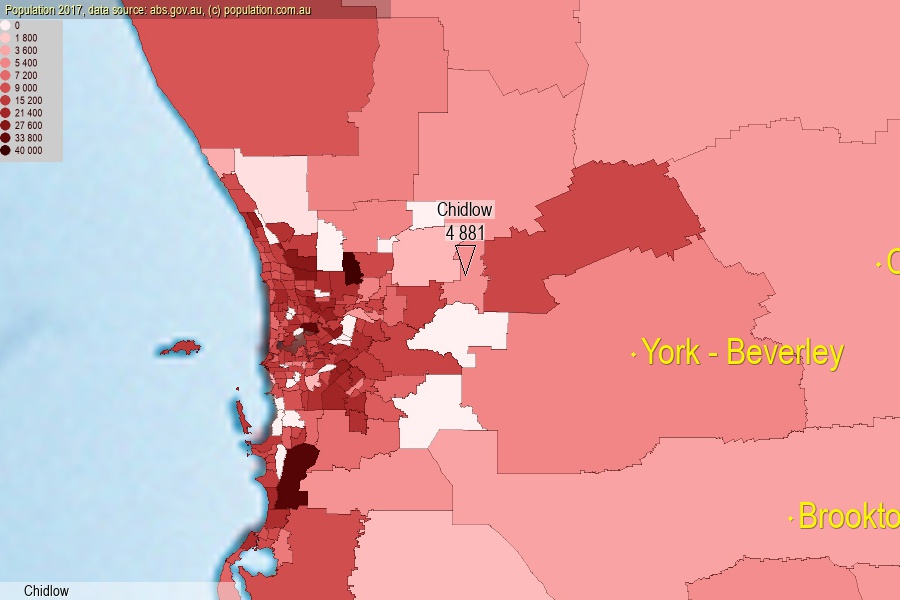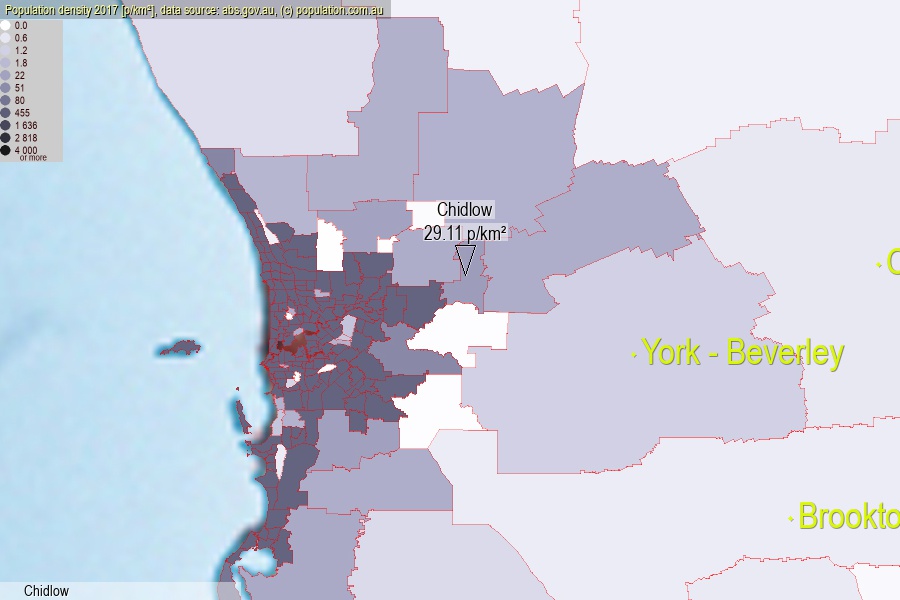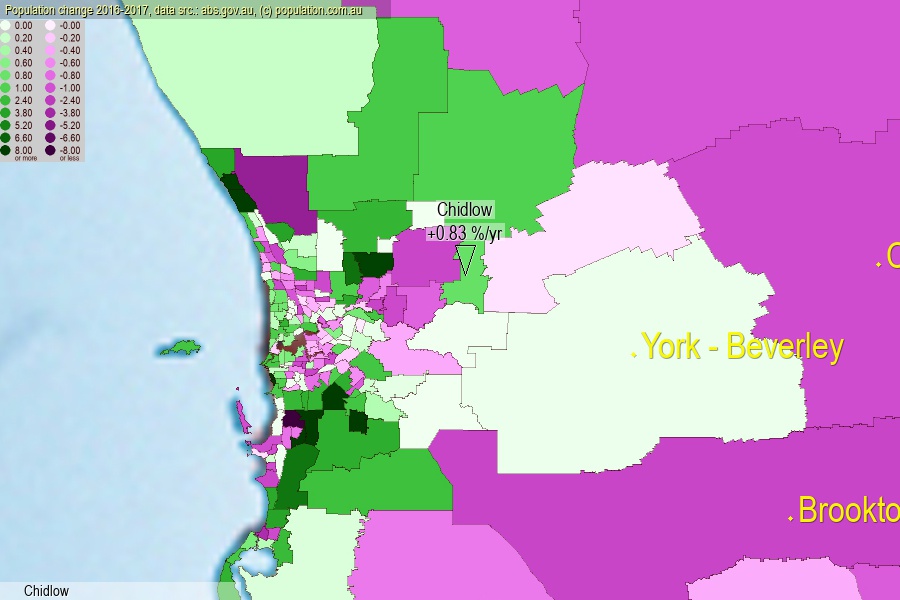 population.com.au
population.com.auLast official estimated population of Chidlow (as Statistical Area Level 2) was 4 881 people (on 2017-06-30)[2]. This was 0.02% of total Australian population and 0.188% of WA population. Area of Chidlow is 167.70 km², in this year population density was 29.11 p/km² . If population growth rate would be same as in period 2016-2017 (+0.83%/yr), Chidlow population in 2025 would be 5 213. [0]



Click to enlarge. Chidlow is located in the center of the images.
Population [people], population density [p./km²] and population change [%/year] [2]
View borders » (new window) [4]
[1991-1992] +2.45 %/Yr.
[1992-1993] +2.34 %/Yr.
[1993-1994] +4.06 %/Yr.
[1994-1995] +2.95 %/Yr.
[1995-1996] +3.39 %/Yr.
[1996-1997] +4.33 %/Yr.
[1997-1998] +1.79 %/Yr.
[1998-1999] +7.46 %/Yr.
[1999-2000] +0.38 %/Yr.
[2000-2001] +3.51 %/Yr.
[2001-2002] +4.74 %/Yr.
[2002-2003] +4.59 %/Yr.
[2003-2004] +3.51 %/Yr.
[2004-2005] +4.18 %/Yr.
[2005-2006] +3.37 %/Yr.
[2006-2007] +2.56 %/Yr.
[2007-2008] +3.10 %/Yr.
[2008-2009] +3.08 %/Yr.
[2009-2010] +2.35 %/Yr.
[2010-2011] +3.07 %/Yr.
[2011-2012] +4.31 %/Yr.
[2012-2013] +4.29 %/Yr.
[2013-2014] +1.46 %/Yr.
[2014-2015] +1.53 %/Yr.
[2015-2016] +1.21 %/Yr.
[2016-2017] +0.83 %/Yr.
[0] Calculated with linear interpolation from officially estimated population
[1] Read more about SA2 and Australian Statistical Geography Standard (ASGS) on abs.gov.au
[2] Population data from Australian Bureau of Statistics (Population and density: 2017; change: 2016-2017)
[3] Digital Boundaries: Australian Statistical Geography Standard (ASGS) 2016.
[4] Border coordinates are simplifyed using Ramer-Douglas-Peucker algorithm.